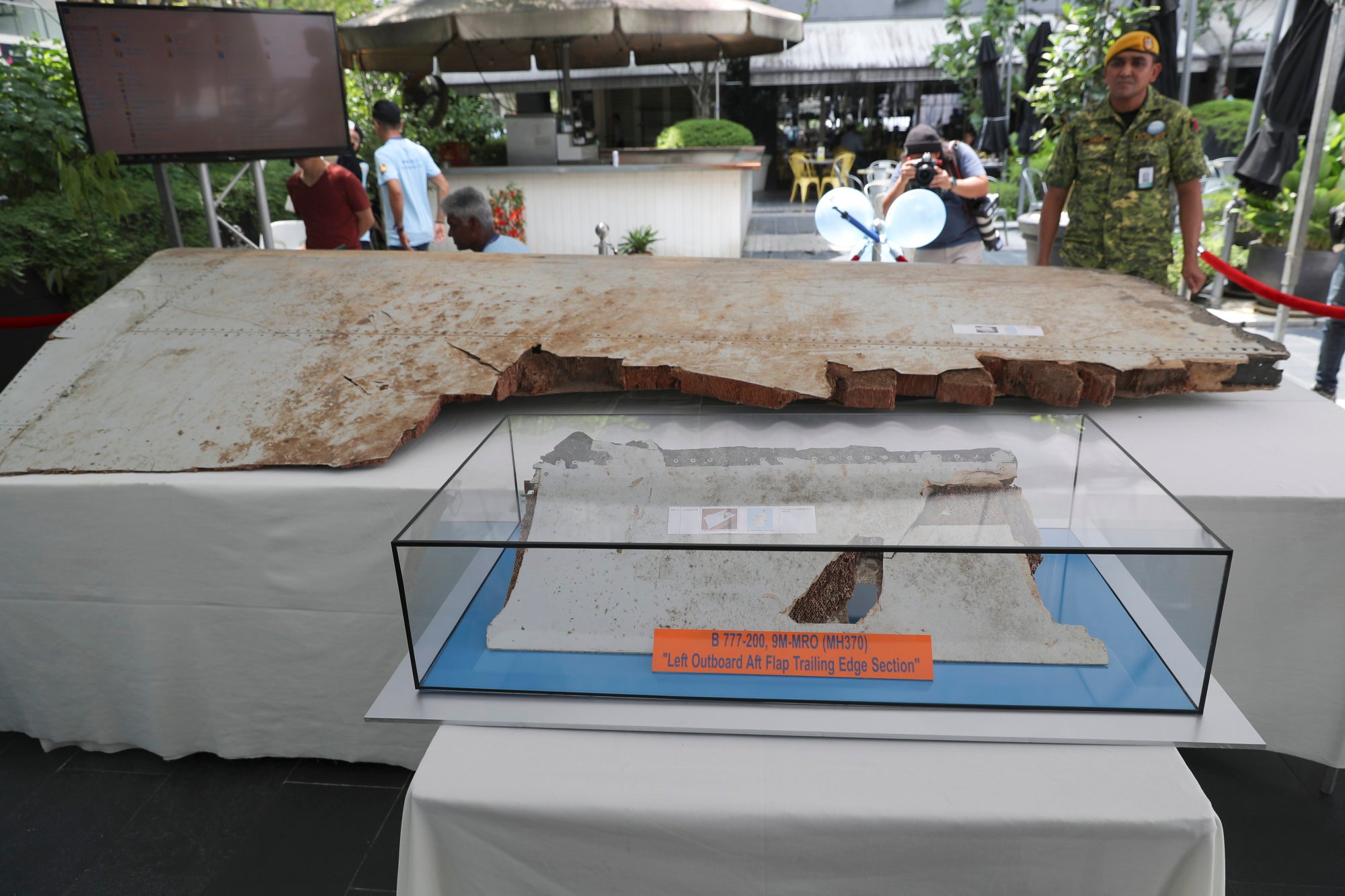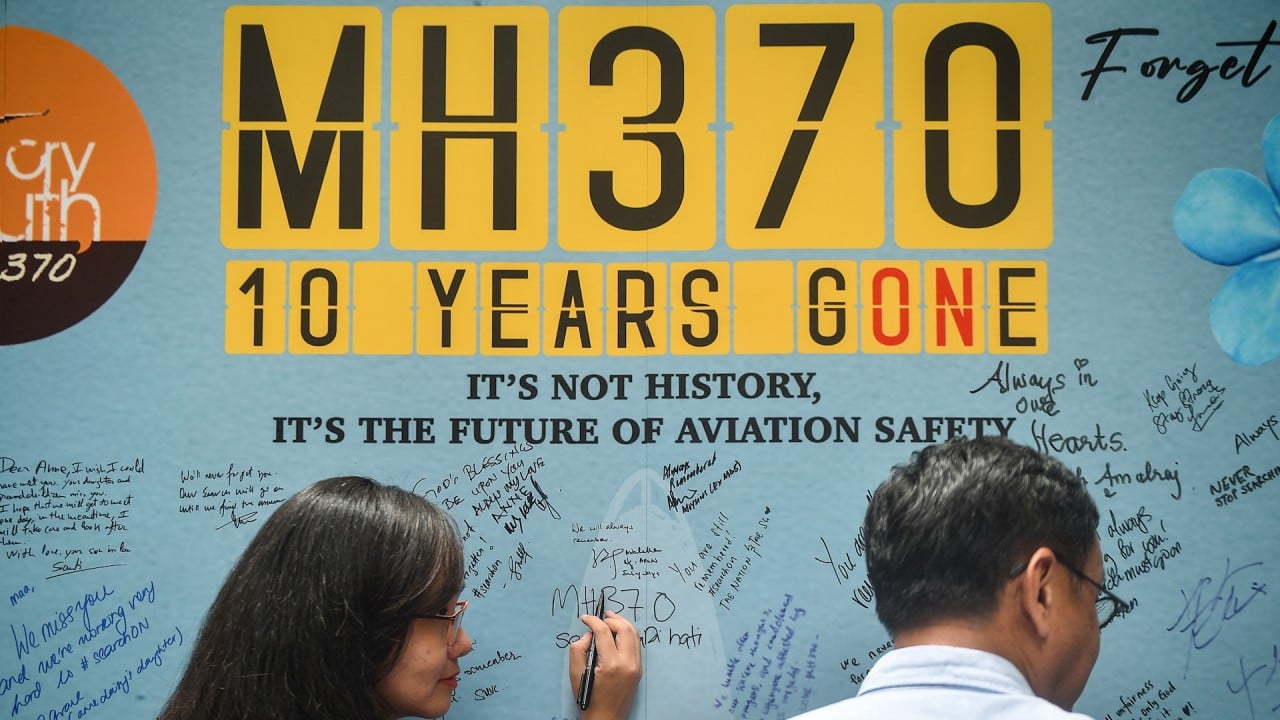
Can Malaysia’s MH370 aircraft still be found, 10 years after it disappeared?
- Previous searches in the Indian Ocean did not locate any wreckage, although several pieces of debris have washed up over the years
- With the debris field likely to remain intact even after 10 years, and a narrower search area and improved technology, there is a high chance the wreckage can still be found
At a remembrance event held earlier this week, the Malaysian transport minister announced a renewed push for another search.

What happened to MH370?
The flight was scheduled to fly from Kuala Lumpur to Beijing. Air traffic control lost contact with the aircraft within 60 minutes of the plane taking off, as it flew over the South China Sea.
Subsequently, it was tracked by military radar crossing the Malay Peninsula and was last located by radar over the Andaman Sea in the northeastern Indian Ocean.
Later, automated satellite communications between the aircraft and British firm Inmarsat’s telecommunications satellite indicated that the plane ended up in the southeast Indian Ocean along the seventh arc (referring to a series of coordinates).
This became the basis for defining the initial search areas by the Australian Air Transport Safety Bureau. Initial air searches were conducted in the South China Sea and the Andaman Sea.
To date, we still don’t know what caused the aircraft’s change of course and disappearance.
What has been found so far?
Two underwater searches of the Indian Ocean, 2,800km off the coast of Western Australia, have also failed to find any evidence of the main crash site.
The initial seabed search, led by Australia, covered 120,000 sq km and extended 50 nautical miles across the seventh arc. It took 1,046 days and was suspended on January 17, 2017.
A second search by Ocean Infinity in 2018 covered over 112,000 sq km. It was completed in just over three months but also did not locate the wreckage.

What about debris?
While the main crash site has still not been found, several pieces of debris have washed up in the years since the flight’s disappearance.
In June 2015, officials from the Australian Air Transport Safety Bureau determined that debris from the plane might arrive in Sumatra, contrary to the ocean currents in the region.
The strongest current in the Indian Ocean is the South Equatorial Current. It flows east to west between northern Australia and Madagascar, and debris would be able to cross it.
Indeed, on July 30, 2015 a large piece of debris – a flaperon (moving part of a plane wing) – washed up on Reunion Island in the western Indian Ocean. It was later confirmed to belong to MH370.
Twelve months earlier, using an oceanographic drift model, our University of Western Australia (UWA) modelling team had predicted that any debris originating from the seventh arc would end up in the western Indian Ocean.

The UWA drift analysis accurately predicted where floating debris from MH370 would beach in the western Indian Ocean. It also guided American adventurer Blaine Gibson and others to directly recover several dozen pieces of debris, three of which have been confirmed to be from MH370, while several others are deemed likely.
To date, these debris finds in the western Indian Ocean are the only physical evidence found related to MH370.
It is also independent verification that the crash occurred close to the seventh arc, as any debris would initially flow northwards and then to the west, transported by the prevailing ocean currents. These results are consistent with other drift studies undertaken by independent researchers globally.

Why a new search for MH370 now?
Unfortunately, the ocean is a chaotic place, and even oceanographic drift models cannot pinpoint the exact location of the crash site.
The proposed new search by Ocean Infinity has significantly narrowed down the target area to within latitudes 36°S and 33°S. This is around 50km to the south of the locations where UWA modelling indicated the release of debris along the seventh arc. If the search does not locate the wreckage, it could be extended north.
Since the initial underwater searches, technology has tremendously improved. Ocean Infinity is using a fleet of autonomous underwater vehicles with improved resolution. The proposed search will also use remotely controlled surface vessels.
In the area where the search is to take place, the ocean is around 4,000 metres deep. The water temperatures are 1–2 degrees Celsius (33.8–35.6 degrees Fahrenheit), with low currents. This means that even after 10 years, the debris field would be relatively intact.
Therefore, there is a high probability that the wreckage can still be found. If a future search is successful, this would bring closure not just to the families of those who perished, but also the thousands of people who have been involved in the search efforts.

